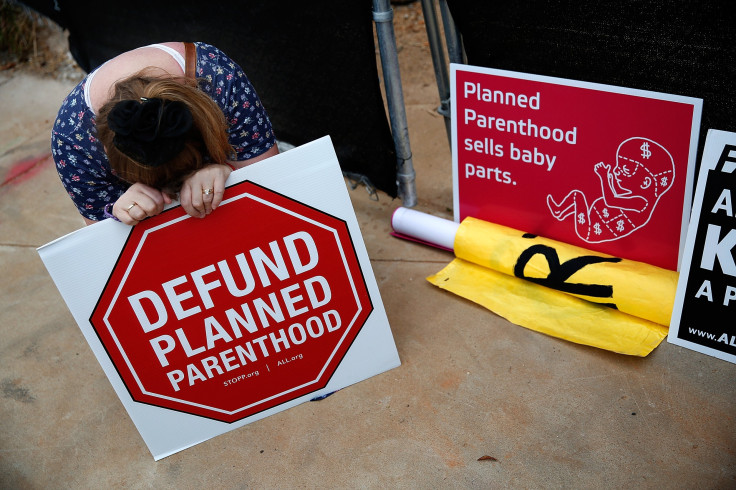Planned Parenthood Government Shutdown 2015: How Federal Funding Supports Major Women's Healthcare Provider

A congressional debate over whether to defund Planned Parenthood or shut down the government may be over. Senate Minority Leader Mitch McConnell moved to take out a key budget provision that would have cut federal funding to Planned Parenthood, the Associated Press reported Monday.
But in what ways, and how much, does the government actually support Planned Parenthood? Here’s what you need to know about how the federal government supports one of the country’s biggest women’s healthcare providers.
The government is the largest source of revenue for Planned Parenthood, contributing 41 percent, or $528.4 million, of $1.3 billion in revenue, according to the group’s 2013-2014 annual report. The second-largest portion of its revenue, at 30 percent or 391.8 million, came from private sources. The rest came from non-government and other sources.
The federal funding comes from Medicaid, the government healthcare program for low-income or disabled Americans, and Title X, a federal program for family planning and preventative health services for low-income Americans, National Public Radio has reported. By law, funding under Title X cannot go to abortions. Medicaid funding is allowed to cover abortion in cases of incest or rape, or when a pregnant woman's life is in danger, the American Civil Liberties Union has explained. So when Planned Parenthood does carry out abortions, those procedures are largely done with private sources of funding.
In 2013 and 2014, three quarters of Planned Parenthood’s services went to providing contraception and testing or treating for sexual transmitted infections and diseases. Cancer screening and prevention constituted 9 percent of its services and 11 percent went to “other women’s health services.” Abortions constituted just 3 percent of Planned Parenthood's services. One percent went to “other services,” according to the annual report.
AND Planned Parenthood uses government funding for other very important services. pic.twitter.com/RKMToQcFmR
— ☯LIS∆ HE∆UXP☯ (@lisagonzales) September 17, 2015A significant--and therefore crucial--portion of Planned Parenthood's funding comes from the government and the vast majority of its services are preventative, the numbers show. Yet recent calls to end federal funding to Planned Parenthood are only the latest in decades of political controversy over the organization. Meanwhile, the legal questions raised in the most recent controversy were actually settled decades ago, in the early 1990s, NPR has reported.
In the 1980s, the administration of President Ronald Reagan banned federal funds from going to fetal tissue research. President Bill Clinton overturned that ban with an executive order in 1993, after which Congress passed a law that allowed for the purchase and use of fetal tissue for research “regardless of whether the tissue is obtained pursuant to a spontaneous or induced abortion or pursuant to a stillbirth.”
Republicans in the House have called for defunding Planned Parenthood before. In 2011, an anti-abortion group published videos, later revealed to be heavily edited, that accused Planned Parenthood of doing nothing to help minors being sexually abused.
The recent defunding demands were sparked by videos, released in July, in which members of an anti-abortion group secretly recorded a conversation with officers from Planned Parenthood about transferring fetal tissue to research facilities. Republicans quickly demanded the government defund the national women’s healthcare provider, proposing legislation in August to cut funding to Planned Parenthood and attaching it to a crucial government spending bill.
A first vote on McConnell’s legislation is expected Monday evening, with a final vote as early as Tuesday. But two House committees have also released drafts of legislation to defund the organization by taking away the $350 million it receives from Medicaid. It would also repeal key parts of the Affordable Care Act, President Barack Obama’s signature healthcare law.
© Copyright IBTimes 2025. All rights reserved.




















